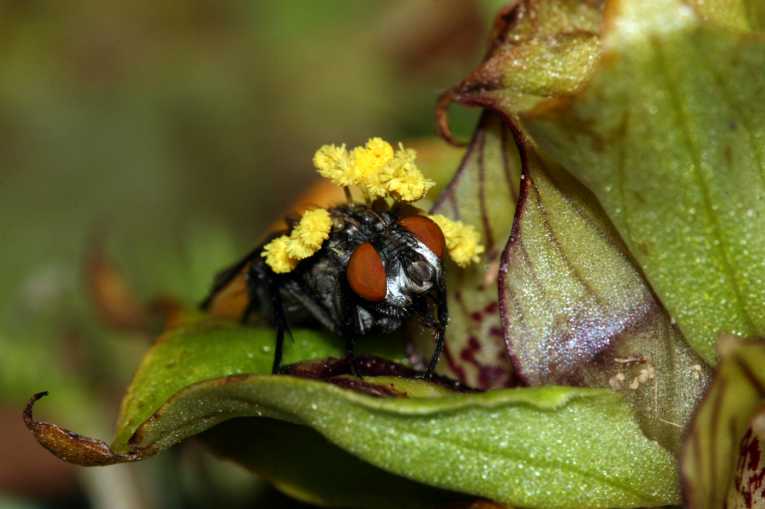Image Credit © Dennis Hansen.
A South African orchid mimics the stench of corpses to draw in its pollinating carrion flies. Its putrid scent so perfectly mimics the stench of small carcasses that its target pollinators cannot tell the difference between real dead animals and the deathly perfume of the flower.
The orchid, Satyrium pumilum targets a carrion feeding flesh fly as its pollinator and is so convincing that female flies have been seen laying eggs in the flower. In addition to its smelly perfume of decaying corpse, the interior of the flower is a mottled brown in colour that resembles rotting meat. Timotheus van der Niet worked at the University of KwaZulu-Natal while conducting the study, spent three months out in the field in Namaqualand studying the sex life of the death-scented flower.
'Its common for orchids to entice pollinators by various devious means but we found that these flowers were targeting a single species of flesh fly, and mostly females,' he said. 'We’ve found that scent plays a hugely important role in pulling in the flies, and even inside the flower different scents attract the flies into the right location to pick up the pollen. The combination of smell and sight is irresistible.'
Van der Niet used roadkill to attract flies in the vicinity of orchid colonies and painstakingly identified and sexed the flies on the corpses of squashed small rodents, rock hyraxes. Many of the flesh flies on the roadkill were carrying pollen on their backs from their encounter with the orchids. Improvising at their remote field station, the scientists used materials from the local store (buckets and soft drink bottles) in the remote area near the orchids to test whether the roadkill scent or the orchid was more compelling in drawing in the right species of fly. So similar to the scent of the roadkill was the perfume of the orchid that the flies essentially couldn't tell the difference between them. But not all flies are equal, and the orchid's perfume selectively attracts the single species that is the most effective in pollinating its flowers. Their research is published in the Annals of Botany this week.










